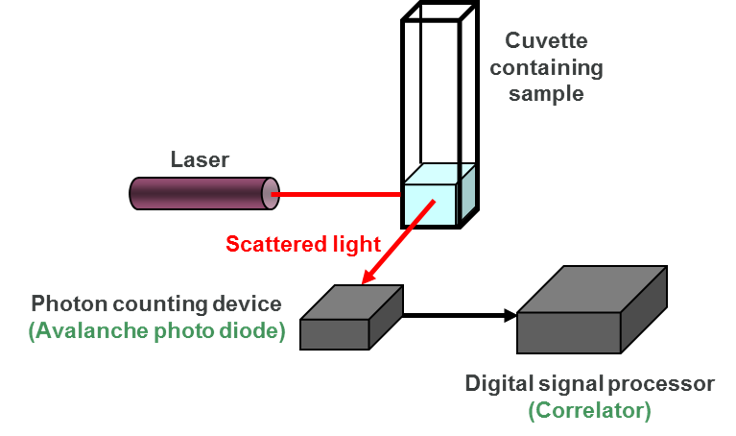

Other scattering techniques have emerged, such as nanoparticle tracking analysis (NTA) 5, which tracks individual particle movement through scattering using image recording. For example, DLS is a low-resolution method that is not suitable for measuring polydisperse samples, while the presence of large particles can affect the size accuracy 4. Although DLS is a useful approach to determine the size distribution of many nano- and biomaterials systems, it does suffer from several disadvantages.

This method analyses the fluctuations of scattered light by particles in suspension when illuminated with a laser to determine the velocity of the Brownian motion, which can then be used to obtain the hydrodynamic size of particles using the Stokes-Einstein relationship. For submicron particle measurement, dynamic light scattering (DLS) 4 has now become an industry standard technique.

Recent years have seen many advancements in light scattering technologies for particle characterisation. Particle size analysis based on light scattering has widespread application in many fields, as it allows relatively easy optical characterisation of samples enabling improved quality control of products in many industries including pharmaceutical, food, cosmetic, polymer production, etc. Given that it is compact (on the order of ten cm) and built with low-cost consumer electronics, the newly designed particle size analyser has significant potential for use outside a standard laboratory, for example, in online and in-line industrial process monitoring. When only spherical particles were analysed, the former error was significantly reduced (0.72%). We were able to correct for multiple scattering effects and predict the particle size with mean absolute percentage errors of 5.09% and 2.5% for the cases without and with concentration as an input parameter, respectively. To validate the proposed device, glass beads with diameters ranging from 13 to 125 µm were measured in suspension at several concentrations. From these images, a machine learning model predicts the volume median diameter of the particles. The filter is combined with a light-emitting diode and a complementary metal-oxide-semiconductor image sensor array to acquire angularly resolved scattering images. The key novelty is a small form factor angular spatial filter that allows for the collection of light scattered by the particles up to predefined discrete angles. In this paper, we introduce the concept of a new particle size analyser in a collimated beam configuration using a consumer electronic camera and machine learning. Compared to other non-light-based counterparts, such a laser diffraction scheme offers precision, but it does so at the expense of size, complexity and cost. The most common particle size analyser relies on measuring the angle-dependent diffracted light from a sample illuminated by a laser beam. Light scattering is a fundamental property that can be exploited to create essential devices such as particle analysers.


 0 kommentar(er)
0 kommentar(er)
